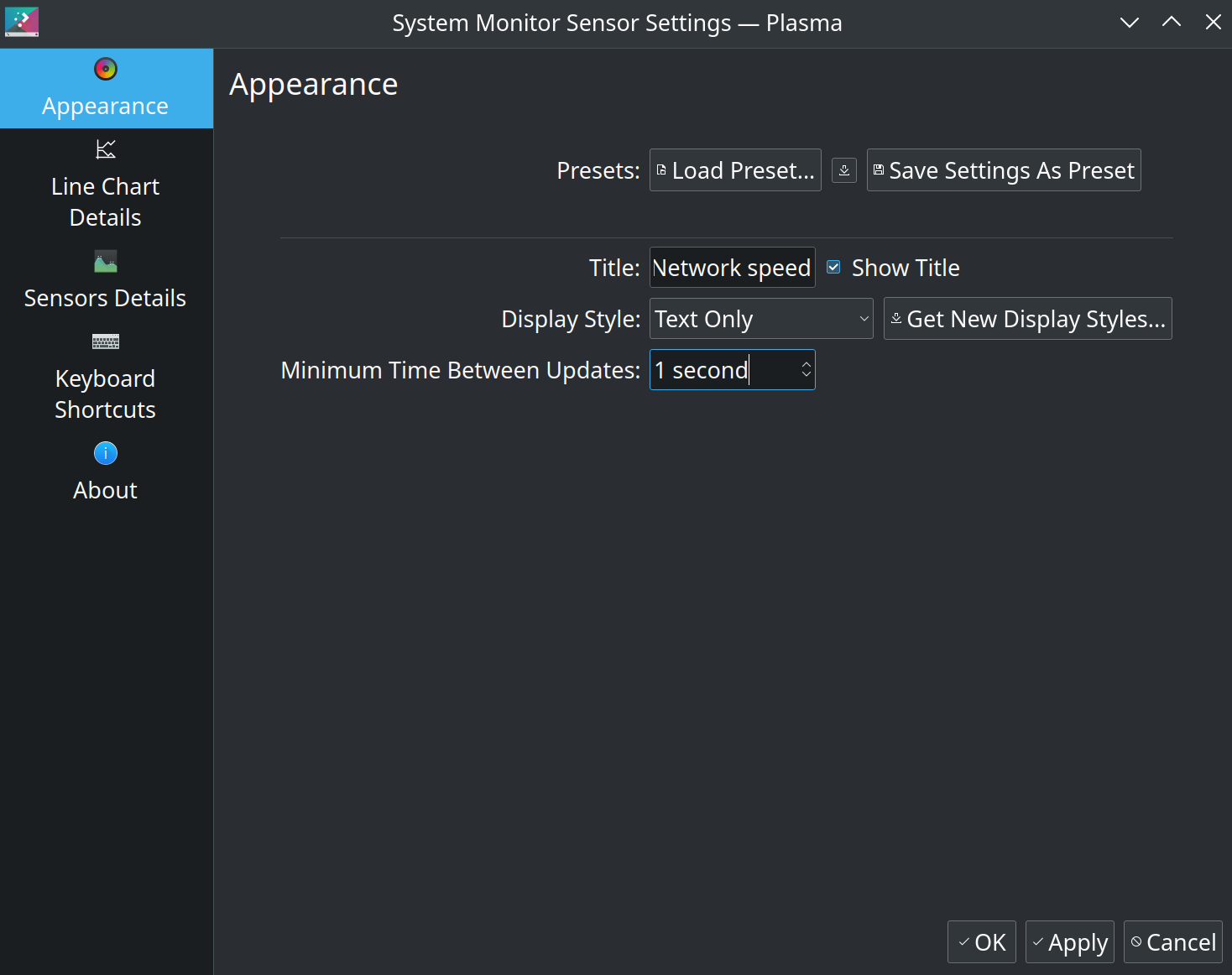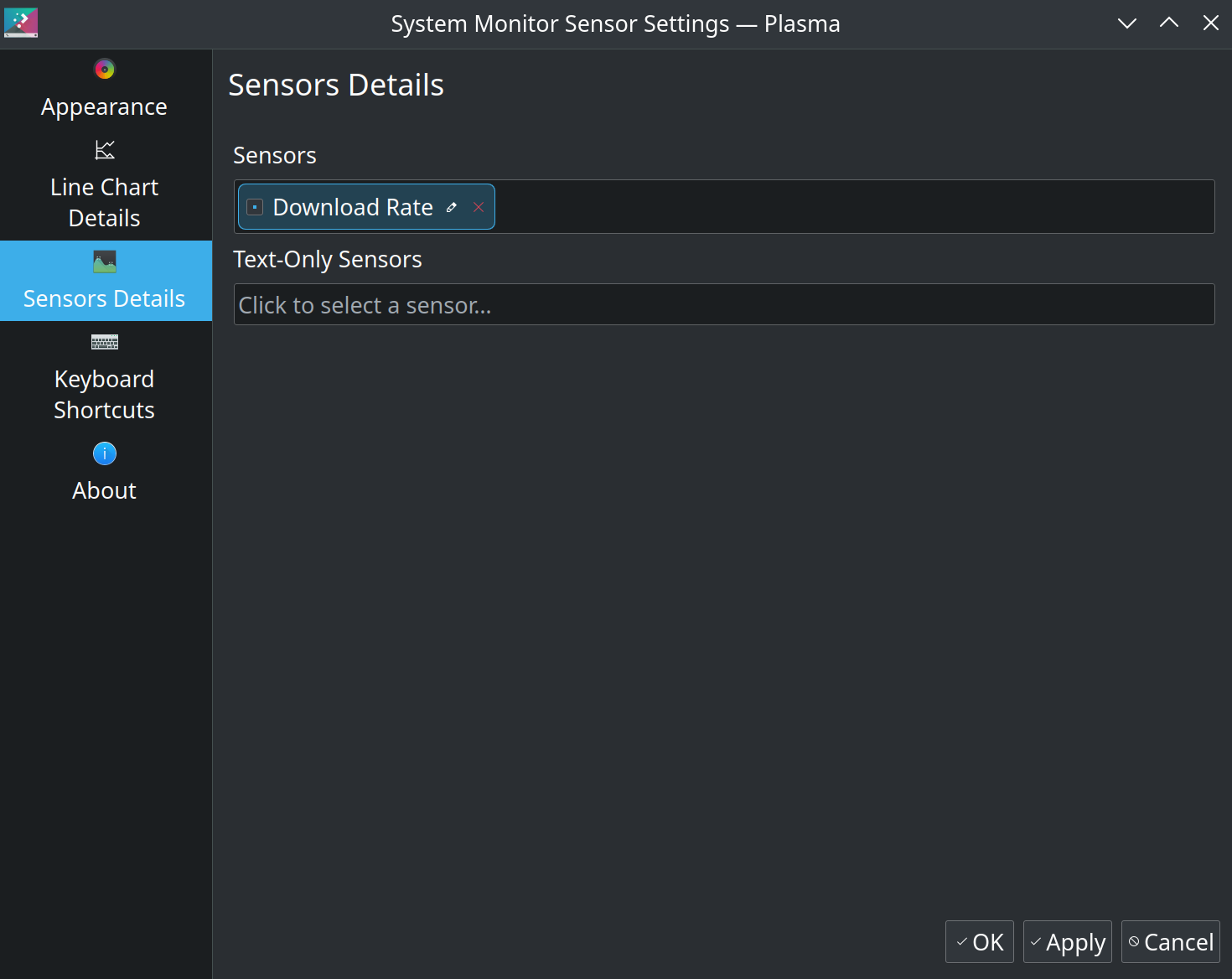I have been using the Netspeed widget on my KDE Plasma installations for a long time to display the network download and upload speed in the Plasma panel. When I upgraded to Kubuntu 22.04 a few months ago, I found that it stopped working. After doing some research, I found that the KSysGuard package that the widget depends on has been removed from the Debian and Ubuntu repositories as it is unmaintained (Debian bug).
Thanks to a useful suggestion on Reddit, I was able to recreate the functionality of this widget using the System Monitor Sensor widget. Here is what I did to achieve it.
- Add the
System Monitor Sensorwidget to the panel. - Right-click the widget and click on the
Configure System Monitor Sensoroption in the menu - In the
Appearancetab, load theNetwork speedpreset, set theDisplay styletoText Onlyand set theMinimum Time Between Updatesto1 second. Apply the changes before proceeding to the next step.
- Open the
Sensors Detailstab and in theText Only Sensorsfield, search for theDownload Ratesensor. I chose theDownload Rate (B/s)version. There is also aDownload Rate (b/s)sensor, if you prefer that.
- Click on the small pencil icon edit button just after the name of the widget,
Download Rate, to edit it. Specify the down arrow symbol, ↓, as the name. Apply the changes. - Now you have a widget that shows the current download speed on the panel, updated once every second.
- Add another
System Monitor Sensorwidget to the panel and configure it to display theUpload Rateby following the steps above, tweaked for displaying the upload rate. - The result of doing these steps should look like what is shown in the screenshot below.

With this, I have a good replacement for the NetSpeed Widget on my Kubuntu install.